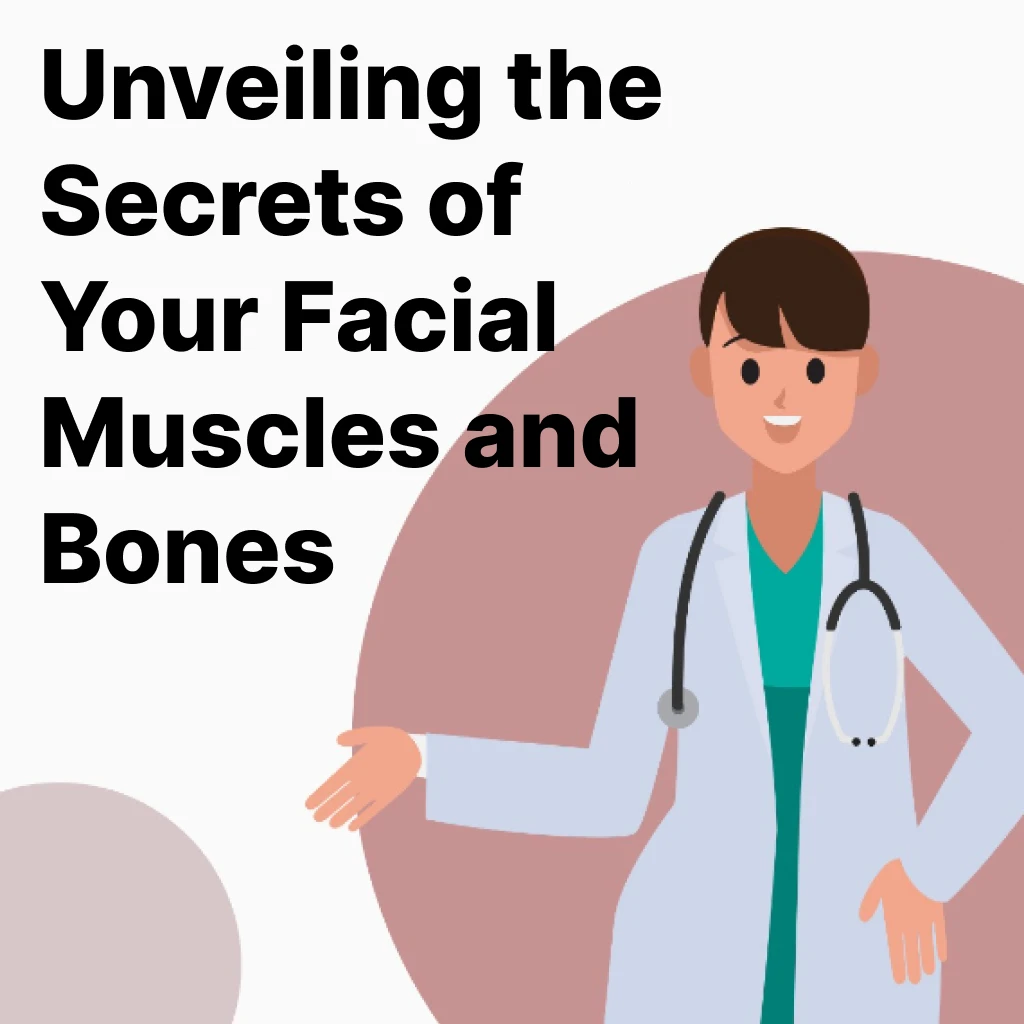Ever wondered how your face works its magic? It’s not just about looks – there’s a bunch of muscles and bones that team up to make expressions and keep things steady. Let’s dive into the world of facial muscles and bones. We’ll break it down to understand how these parts make your face show feelings and help you chew your food. Imagine it like your face has its own special toolkit!
Superficial Facial Muscles

Did you know that the surface of your face is a remarkable network of muscles that play a significant role in expressing emotions and aiding in oral preparation?
Frontal Belly of the Occipitofrontalis
This muscle, also known as the frontalis muscle, covers the forehead and enables us to raise our eyebrows, showing surprise or curiosity. It contributes to our range of facial expressions and adds depth to our nonverbal communication.
Orbicularis Oculi
This muscle encircles our eyes and is responsible for winking, blinking, and squinting. It helps us convey emotions like happiness and surprise!
Nasalis
It’s responsible for flaring and compressing our nostrils, helping us express emotions like disgust or sniffing delicious aromas. It also assists in controlling airflow during breathing.
Zygomaticus Major/Minor
These muscles stretch from the cheeks to the corners of the mouth, enabling us to smile, laugh, and express joy. Say cheese!
Orbicularis Oris
Circling the mouth, this muscle lets us pucker, whistle, and form various facial expressions involving the lips. It also aids in oral preparation for food and liquids, playing a vital role in speech and eating.
Risorius
Ever laughed so hard that your cheeks hurt? The risorius muscle, found at the corners of the mouth, is responsible for that sensation. It stretches our smile even wider!
Mentalis
Situated on the chin, the mentalis muscle allows us to pout, frown, and wrinkle our chin. It’s often involved in expressing thoughtfulness or concentration.
These superficial facial muscles beautifully showcase the versatility of our expressions and contribute to our overall communication.
Deep Facial Muscles

Beneath the surface, there are powerhouse muscles that contribute to our expressions and oral functions?
Temporalis
This muscle, located on the sides of the head, helps us chew our food by closing the jaw.
Corrugator Supercilii
Situated between the eyebrows, this muscle allows us to furrow our brows, conveying emotions like concern, concentration, or frustration.
Procerus
Located above the bridge of the nose, the procerus muscle helps us scrunch our nose, expressing dislike, disbelief, or concentration.
Levator Labii Superioris
Stretching from the upper lip to the cheekbone, this muscle elevates the upper lip, enabling us to express a sneer or snarl. It adds that extra edge to our facial expressions!
Levator Anguli Oris
Situated near the corners of the mouth, this muscle assists in raising the corners of the mouth, creating a smile or smirk.
Masseter
One of the strongest muscles in the body, the masseter helps us chew by closing the jaw and providing the force needed to crush food.
Buccinator
Located inferior to the cheekbones, the buccinator muscle helps us blow air, suckle, and keep food between our teeth while chewing.
Depressor Anguli Oris
When we’re feeling down or expressing sadness, this muscle, located at the corners of the mouth, pulls them downward, creating a frown.
Depressor Labii Inferioris
Running from the lower lip to the chin, this muscle assists in lowering the bottom lip, helping us express sadness or a pout.
These deep muscles of the face play a significant role in our expressions and oral functions. They contribute to our unique personalities and add depth to our interactions.
To learn how Dysgeusia affects muscles, see my post Dysgeusia And Head And Neck Cancer
Bones of the Face and Skull

Beneath the surface, our face and skull hide an intricate network of bones that give us structure and protect our brain.
Frontal Bone
This bone forms the forehead and roof of the eye sockets (orbits). It plays a crucial role in protecting the brain and shaping our unique facial features.
Parietal Bones
Situated on the top and sides of the skull, the parietal bones help form the shape of our head. They’re like a protective crown for our brain!
Temporal Bones
These bones house our hearing apparatus (inner ear) and contribute to the sides and base of the skull. They’re key players in both hearing and balance.
Occipital Bone
The back of our skull is formed by the occipital bone. It’s like a strong shield safeguarding the lower part of our brain and connecting to the spinal column.
Ethmoid Bone
Found between the eye sockets, the ethmoid bone assists in forming the nasal cavity and nasal septum.
Sphenoid Bone
Often referred to as the “keystone” of the skull, the sphenoid bone connects many other bones and is crucial for skull stability. It is an attachment site for many of the muscles of mastication.
Maxilla and Mandible
The maxilla forms our upper jaw, while the mandible is our lower jaw. Together, they support our facial structure and aid in mastication.
Nasal Bones
These delicate bones form the bridge of our nose, adding definition and character to our facial appearance.
Zygomatic Bones
Also known as the cheekbones, they form the prominence of our cheeks and play a role in our facial expressions.
Lacrimal Bones
These tiny bones house and protect the tear ducts.
A Combination of Expression and Function
Now you know what’s happening underneath your skin every time you grin, raise an eyebrow, or look sad. Think of your face as a multitasker. Both expressing emotions and making sure you can eat and talk.
From the surface muscles to the deep ones, they all play their part. And those bones? They’re the foundation that holds everything together. So next time you notice a friend’s face light up with happiness or scrunch up in concentration, you can picture the muscles and bones working together behind the scenes.


Wonderful article. Extremely informative.